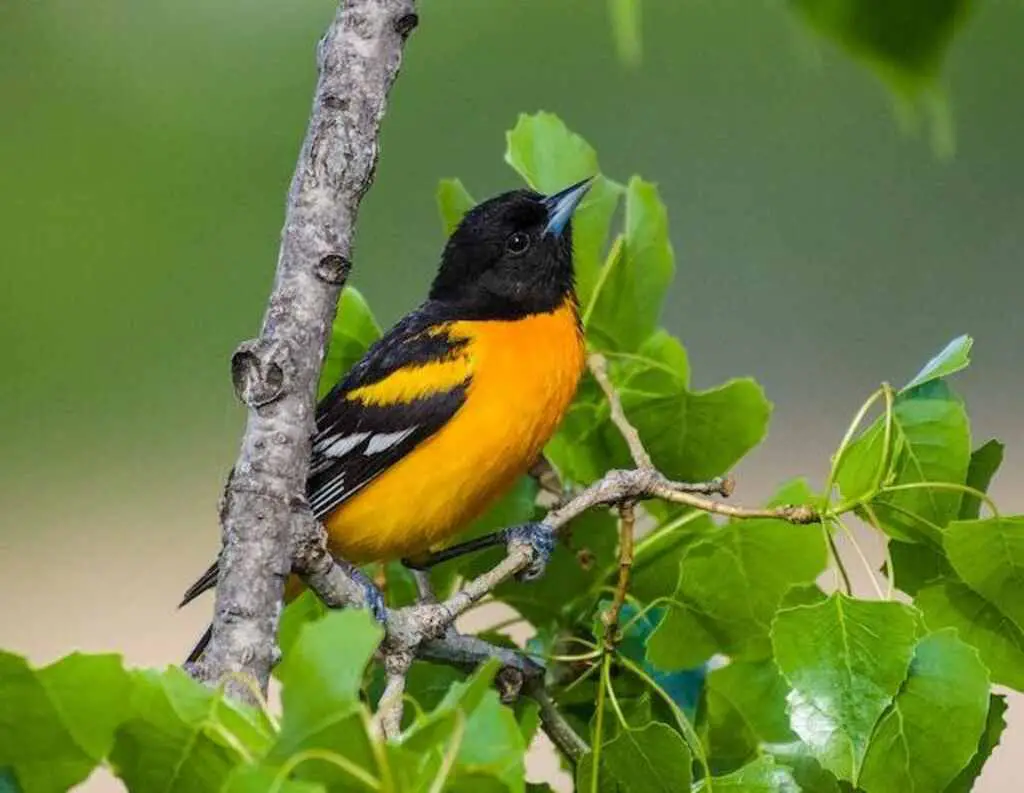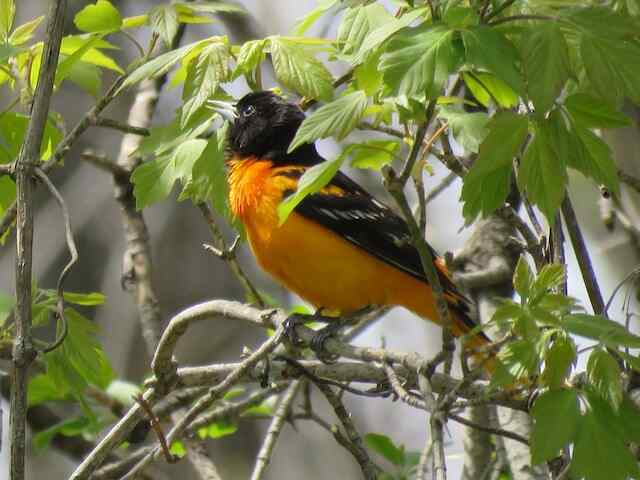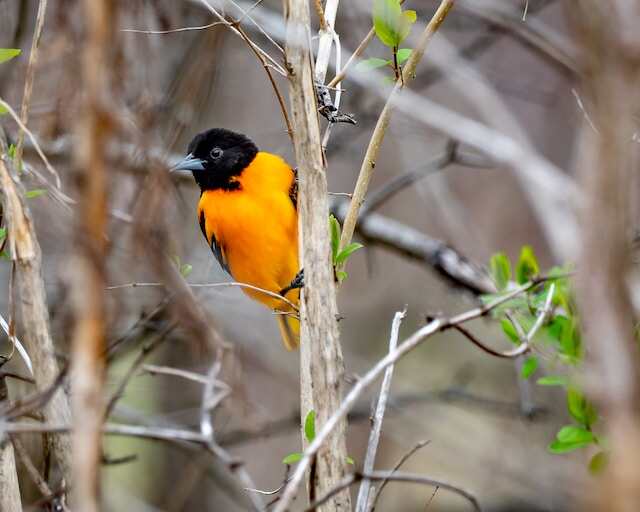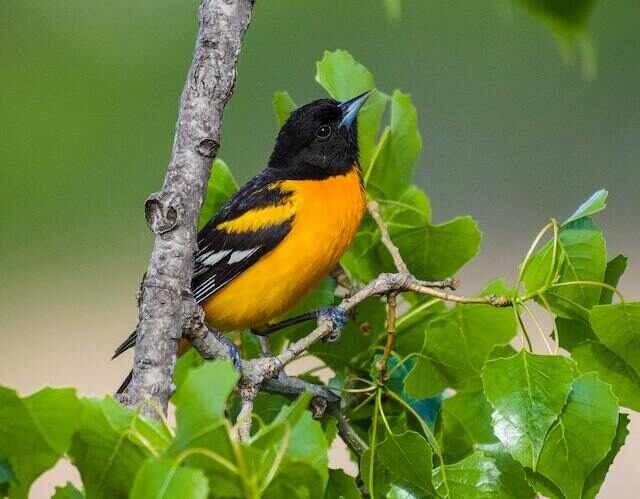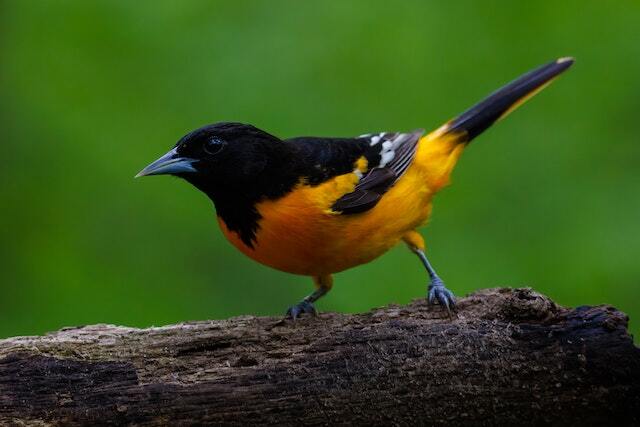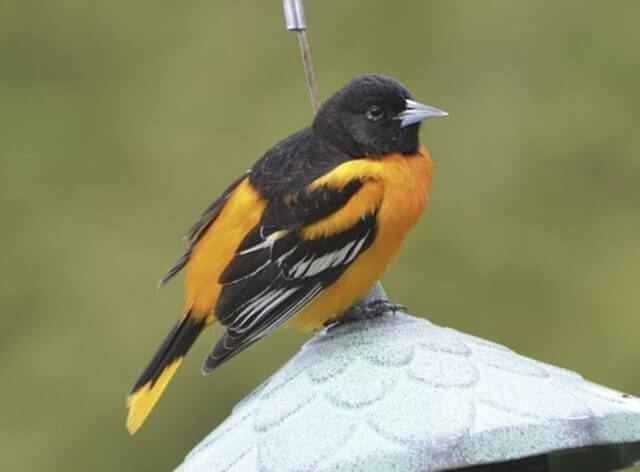Baltimore Orioles: Do They Have a Sweet Spot for Mulberries? These vibrant birds, adorned with captivating orange and black plumage, have charmed us with their melodious songs and intricate nests.
But when it comes to their palate, what tickles their taste buds? Join us on a delightful journey as we explore the feeding habits of Baltimore Orioles, with a focus on the tantalizing question:
Do Baltimore Orioles eat mulberries? Along the way, we’ll uncover the significance of understanding their dietary needs and discover the rewards of offering the perfect fare for our beloved avian companions.
Table of Contents
- 1 Introduction to Baltimore Orioles
- 2 Overview of Baltimore Orioles’ Feeding Habits
- 3 What are Mulberries?
- 4 Do Baltimore Orioles Eat Mulberries?
- 5 Benefits of Mulberries for Birds
- 6 Other Foods Baltimore Orioles Eat
- 7 Tips for Feeding Baltimore Orioles
- 8 Conclusion: The Importance of Understanding Bird Feeding Habits
- 9 Frequently Asked Questions
- 9.1 How do Baltimore Orioles mate?
- 9.2 What is the average lifespan of a Baltimore Oriole?
- 9.3 Do Baltimore Orioles migrate, and if so, when and where do they go?
- 9.4 How do Baltimore Orioles communicate with each other?
- 9.5 Is there a difference in the feeding habits of male and female Baltimore Orioles?
- 10 Conclusion
- 11 Author
Introduction to Baltimore Orioles
The foraging habits and dietary preferences of certain avian species have been the subject of extensive research in the field of ornithology.
Among these species is the Baltimore Oriole, a colorful and migratory bird known for its striking plumage and melodious song.
While some individuals may keep Baltimore Orioles as pets, these birds are primarily found in their natural habitats, where they play an important ecological role.
In recent years, conservation efforts for Baltimore Orioles have increased due to concerns about habitat loss and population decline.
As for their dietary preferences, Baltimore Orioles are known to consume a variety of foods, including insects, nectar, and fruit.
However, whether they eat mulberries specifically remains a topic of debate among experts.
To gain a better understanding of their feeding habits, it is necessary to first provide an overview of Baltimore Orioles’ foraging behavior and preferences.
Overview of Baltimore Orioles’ Feeding Habits
This section provides an overview of the Baltimore Orioles’ feeding habits. These birds are known to consume a diverse range of fruits and insects as part of their diet, with over 60% of their food intake consisting of fruit, according to one study.
Baltimore Orioles are migratory birds, and their feeding patterns change depending on their location and the time of year.
They are attracted to mulberry trees, which are a common food source for them during their migration.
Mulberries are a type of fruit that grows on trees, and they are known to be high in antioxidants and other beneficial nutrients.
Understanding the feeding habits of Baltimore Orioles is important for conservation efforts, as changes in their food sources can have a significant impact on their survival.
In the next section, we will explore what mulberries are and why they are important to these birds.
What are Mulberries?
Mulberries are a type of fruit that play a crucial role in the feeding habits and survival of a migratory bird species. There are several types of mulberries, including black, red, and white, all of which are rich in nutrients and antioxidants.
Humans also use mulberries for various purposes, such as making wine, jam, and desserts. Mulberries are also used in traditional Chinese medicine to treat various ailments, including fever and constipation.
Interestingly, the leaves of the mulberry tree are used to feed silkworms, which produce silk. With such diverse uses of mulberries, it is no wonder that they are an essential part of the ecosystem.
In the next section, we will explore whether Baltimore orioles eat mulberries.
Do Baltimore Orioles Eat Mulberries?
Exploring the feeding habits and dietary preferences of migratory bird species provides insight into the complex interactions between organisms within ecosystems.
When it comes to Baltimore Orioles, they are known to have a diverse diet that includes insects, nectar, and fruits.
While they primarily feed on insects during breeding season, they shift towards a more fruit-based diet during migration.
Mulberries are one of the fruits that they may consume.
The mulberry tree is known to attract birds due to its sweet and juicy berries.
Orioles have been observed eating mulberries, although they may prefer other fruits such as cherries or grapes.
Nonetheless, the availability of mulberries can provide an additional food source for these birds during migration.
This highlights the importance of understanding the dietary preferences of migratory birds and the role of certain plants, such as the mulberry tree, in attracting and providing nutrition for them.
Moving forward, it is important to explore the benefits of mulberries for birds and how they can be used to enhance bird conservation efforts.
Benefits of Mulberries for Birds
Understanding the nutritional value of mulberries and their potential benefits as a food source for migratory birds can inform strategies for enhancing bird conservation efforts and promoting ecosystem stability.
Mulberry nutrition is rich in antioxidants, vitamins, and minerals, including vitamin C, iron, and potassium. These nutrients are essential for birds’ health, and incorporating mulberries into their diet can aid in their migration and survival.
Additionally, mulberries are known to attract a wide range of birds, including orioles, with their sweet and juicy taste.
By planting mulberry trees in areas where migratory birds frequent, we can create an environment that supports their nutritional needs and encourages their presence.
However, it’s important to note that mulberries should not be the sole food source for birds, as a diverse diet is necessary for their overall well-being.
In the next section, we will explore other foods that Baltimore Orioles eat in addition to mulberries.
Other Foods Baltimore Orioles Eat
A diverse diet is crucial for the overall health and well-being of migratory birds, and understanding the range of foods that Baltimore Orioles consume can inform conservation efforts and promote ecosystem stability.
Baltimore Orioles are known to eat a variety of insects, including beetles, caterpillars, and spiders, as well as fruit and nectar.
While mulberries are a beneficial food source for birds, Baltimore Orioles are not known to specifically seek out mulberries.
Birdseed alternatives, such as mealworms and suet, can provide a good source of protein for Orioles, especially during the non-breeding season when insects are less abundant.
Additionally, offering seasonal feeding options, such as sugar water in the spring and fall, can attract Orioles to backyard feeders.
Understanding the dietary habits of Baltimore Orioles can help promote their health and well-being, while also providing an opportunity for bird enthusiasts to observe these beautiful birds up close.
In the next section, we will explore tips for feeding Baltimore Orioles to help ensure their dietary needs are being met.
Tips for Feeding Baltimore Orioles
In addition to other foods like fruit, nectar, and insects, mulberries are also a popular food for Baltimore Orioles. However, if you want to attract these birds to your yard, there are some tips you can follow for successful feeding.
First, consider making your own DIY feeders using materials like grapes, oranges, jelly, or even grape jelly jars. Orioles are attracted to bright colors, so using orange or red feeders can also help.
Additionally, it’s important to provide food during the right season. Orioles migrate to warmer climates during the winter, so offering food in the spring and summer is ideal.
Lastly, keep in mind that feeding birds can be a fun and rewarding activity, but it’s important to understand their feeding habits and needs.
By following these seasonal feeding tips and attracting orioles with DIY feeders, you can create a welcoming environment for these beautiful birds in your backyard.
Ultimately, understanding bird feeding habits can lead to a better appreciation and enjoyment of nature.
Conclusion: The Importance of Understanding Bird Feeding Habits
Bird feeding habits are crucial to understand for anyone interested in creating a welcoming environment for avian species in their backyard.
Understanding bird behavior is key to attracting a variety of birds, such as finches or chickadees, and providing food during the appropriate season can also increase the chances of birds visiting.
Additionally, using bright-colored feeders can make the feeding station more noticeable to birds, making it easier for them to find the food.
By understanding bird feeding habits and incorporating this knowledge into backyard bird feeding practices, individuals can create a vibrant and diverse bird community while also enjoying the beauty of these fascinating creatures up close.
Frequently Asked Questions
How do Baltimore Orioles mate?
Baltimore orioles are known for their distinctive orange plumage, but their behavior during the mating season is equally fascinating. Nesting habits and vocalizations are an integral part of the Baltimore oriole’s behavior.
The female Baltimore oriole is responsible for building the nest, which is typically a hanging basket made of plant fibers and grasses.
Male Baltimore orioles are known for their beautiful and complex songs, which they use to attract mates and establish their territory.
Courtship rituals of Baltimore orioles are also fascinating, as males perform elaborate aerial displays with their wings and tails to impress females.
Overall, the Baltimore oriole’s behavior during the mating season showcases a unique and intricate set of behaviors that are both captivating and intriguing.
What is the average lifespan of a Baltimore Oriole?
The Baltimore Oriole, a brightly colored bird that is native to North America, has an average lifespan of approximately 8 years.
However, this lifespan can vary depending on a variety of factors affecting the bird’s health and survival, including habitat loss, predation, and disease.
Interestingly, the Baltimore Oriole’s diet plays a significant role in its lifespan. While the bird primarily eats insects and nectar, it also consumes fruits such as mulberries.
Mulberry consumption appears to provide the bird with essential nutrients and antioxidants that support its overall health and well-being.
Therefore, factors like a nutritious diet, in addition to maintaining a healthy habitat, are critical for ensuring the longevity of the Baltimore Oriole.
Do Baltimore Orioles migrate, and if so, when and where do they go?
Baltimore Orioles are migratory birds that typically fly south for the winter.
Their migration patterns vary depending on their breeding location, with birds from the eastern regions of North America heading towards Central and South America, while those from the western regions fly towards Mexico.
These birds begin their migration in late summer or early fall, with most leaving their breeding grounds by September.
During this time, they cover distances of up to thousands of miles, navigating their way using celestial cues and landmarks.
Their winter destinations are typically in the tropical regions of the Americas, where they can find abundant food sources and suitable habitats.
Understanding the migration patterns of Baltimore Orioles is crucial for conservation efforts, as any disruptions to their migration routes can have significant impacts on their populations.
How do Baltimore Orioles communicate with each other?
Baltimore Orioles are known for their distinctive vocalization patterns, which play a crucial role in their social behavior.
These birds communicate with each other through a range of calls, including songs, chatters, and whistles, which vary depending on the situation and context.
Vocalizations are used to attract mates, establish territories, and communicate with other members of the flock.
Researchers have found that Baltimore Orioles have a complex social structure that involves cooperation and competition among individuals.
This social behavior is reflected in their vocalizations, which are finely tuned to convey subtle nuances of meaning.
By studying these vocalization patterns, researchers are gaining new insights into the behavior and ecology of these fascinating birds.
Is there a difference in the feeding habits of male and female Baltimore Orioles?
Studies have shown that there is no significant difference in the feeding habits of male and female Baltimore Orioles.
Both sexes consume a variety of insects, fruits, and nectar, with no apparent preference for any specific food type.
However, it is worth noting that some individual birds may have personal preferences for certain foods, such as mulberries.
While there is no evidence to suggest that Baltimore Orioles specifically seek out mulberries, they may consume them if they are available in their habitat.
Further research is needed to fully understand the feeding habits of Baltimore orioles and how they may vary between individuals and populations.
Conclusion
The Baltimore Oriole, known for its bright orange plumage and sweet singing voice, is a common sight in many backyards across North America.
While they primarily feed on insects and nectar, they also enjoy a variety of fruits, including mulberries.
Mulberries are a type of fruit that are popular in many parts of the world, and are known for their sweet and juicy flavor.
So, do Baltimore Orioles eat mulberries?
The answer is a resounding yes! In fact, mulberries are a great source of nutrients and energy for these birds.
They are rich in vitamins, minerals, and antioxidants, and provide a tasty and nutritious snack for Baltimore Orioles and other birds.
While mulberries are a great food source for Baltimore Orioles, they are not the only food that these birds eat. They also enjoy other fruits, such as berries, grapes, and apples, as well as insects, spiders, and nectar.
If you want to attract Baltimore Orioles to your backyard, it’s important to provide a variety of foods that meet their nutritional needs.
In conclusion, understanding the feeding habits of birds like the Baltimore Oriole is crucial for their survival.
By providing a diverse range of foods, we can help ensure that these beautiful and important birds have the nutrients they need to thrive.
Whether you are a backyard birdwatcher or a professional ornithologist, it is important to take the time to learn about the dietary needs of these fascinating creatures.
So, the next time you spot a Baltimore Oriole in your backyard, take a moment to appreciate the complexity and beauty of their feeding habits, and the role that they play in our ecosystem.

